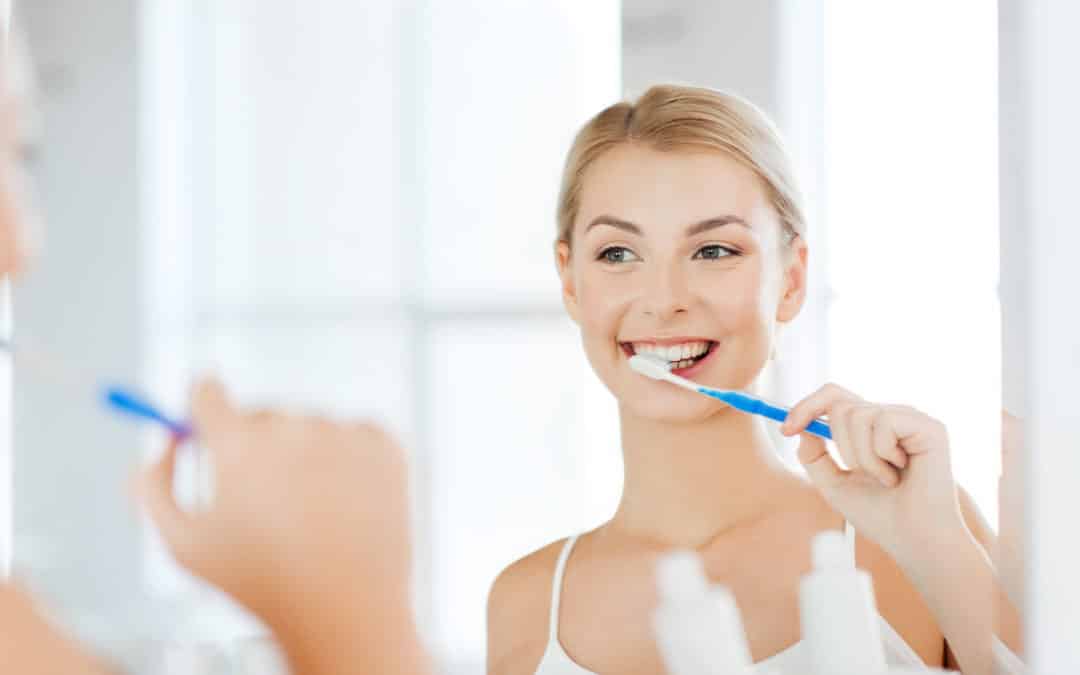“Beauty is power. A smile is its sword!” said infamously by John Ray.
Of course, a smile is so much better with a healthy and beautiful set of teeth. Dental health and regular visits to your family dentist can ensure you have a bold and proud worn smile.
Going to the dentist alone will not keep dental decay, stained and cracked teeth away. There are many things one can do to help improve taking care of your teeth between visits to the dentist.
Below I will give you some, not all tips to help with oral hygiene.
6 Tips to Improve Your Dental Health in Between Visits to the Dentist
Of course, regular visits to your family dentist are imperative to dental care. However, you can help keep your smile shining through in between dental checkups with these 7 tips to improve your dental health.
Suppose a person were to ask you. What are some tips that you can give me to help improve my oral hygiene?
1. Flossing Daily
Flossing daily is an important part of your dental hygiene routine. Flossing helps dislodge food and plaque stuck in between your teeth, while brushing removes the dislodged food.
If you brush first and floss afterward, it kind of defeats the object as the plaque remains in your mouth until the next time you brush.
2. Regular Brushing of Teeth
Plaque is a layer of bacteria that coats your teeth. If you don’t brush your teeth in a proper manner, this can cause a build-up, and this is the main cause of gum disease and tooth decay.
Tooth brushing stops plaque from building up. Try to make sure you brush every part of all your teeth.
You do not have to be over the top with this routine. It is sufficient to have a regular brushing routine. Perform this ritual twice a day, once before going to bed and again when you get up in the morning. Each brushing session should last at least 2 minutes.
It is of equal importance to use fluoride toothpaste as this helps protect your teeth.
How Should you Brush Your Teeth?
- Keeping your toothbrush at an angle will ensure that you reach the areas between the teeth
- Squeeze a small amount of fluoride toothpaste onto the bristles of the toothbrush
- Use small gentle circular motions brushing outer and inner areas
- Use back and forth motion on the chewing surfaces
- Spit out any excess toothpaste, try not to rinse your mouth out with water as this will help the absorption of the fluoride, which strengthens the tooth surface
3. Change Your Toothbrush at Regular Intervals
Regular use of a toothbrush will tend to splay the toothbrush bristles. Old and worn toothbrushes are not as effective as a new strong toothbrush.
A toothbrush should typically be changed every 3 to 4 months to ensure good oral hygiene.
4. Avoid High Sugar Content Foods and Drinks
The phrase you are what you eat can be true for teeth and gums. Plaque is a thin film of bacteria and remains which covers the whole of your mouth.
Avoid food and drink with a high content of sugar as well as processed and acidic foods. Without significant nutritional value as this will increase the probability of cavities and bleeding gums.
Some foods that will help keep your oral health in check are
Dairy Products
Milk, cheese, and yogurt are some dairy products that are healthy and contain calcium and phosphates. These foods help put back minerals your teeth might have lost due to other foods.
Fiber-rich Fruits and Vegetables.
They say that foods with fiber help keep your teeth and gums clean. They also get saliva flowing. This is your best natural defense against cavities and gum disease. This is why it is advisable to east something with natural sugars such as fruits after a meal.
Fatty Fish
Eating fatty fish such as salmon can also help with your dental health as it is high in vitamin D. This vitamin is necessary for every system in your body. Still, one of its lesser-known benefits is its ability to reduce the risk of tooth decay.
There are many more foods that help with oral health. Try to focus on foods that are low in sugar, particularly processed sugars and carbohydrates, high in fiber, and contain nutrients your mouth needs, such as calcium, phosphorus, and magnesium.
5. If You Are a Smoker Quit
Smoking is a leading cause of periodontal and gum disease. How does smoking affect gum disease, you ask?
Gum or periodontal disease causes inflammation around the tooth. This irritation can affect the bone and supporting structures by loosening the tooth from its base, thus causing the tooth to fall out.
When you go for any type of surgery, do you remember the Doctor asking if you are a smoker? Over a period of time, smoking weakens your body’s immune system, which can result in a reduced ability to recover after surgery.
Limiting or even avoiding your tobacco intake will help save you from periodontal and gum disease and even oral cancer.
6. Regular Dental Check-Ups
Last but not least, schedule regular check-ups.
Having your dentist regularly examine your entire oral condition and taking x-rays will help in the early detection and prevention of any future issues with your oral hygiene and keep your teeth strong and healthy.
Keep Your Smile Bright
Good oral hygiene between dental health check-ups and regular visits to the dentist will help you maintain healthy teeth and gums.
Also, remember, prevention is better than a tooth extraction. If you begin to feel some sort of sensitivity in a tooth or you damage a tooth, don’t wait until it’s time for your check-up to do something about it. Getting in early can help you get on top of a bigger problem.
Do not be afraid to contact us and keep your smile going.

